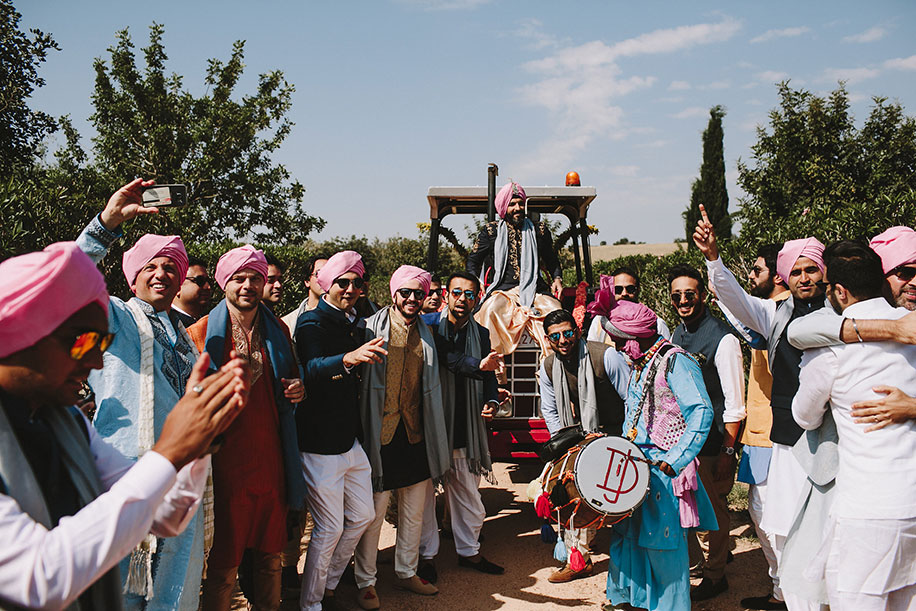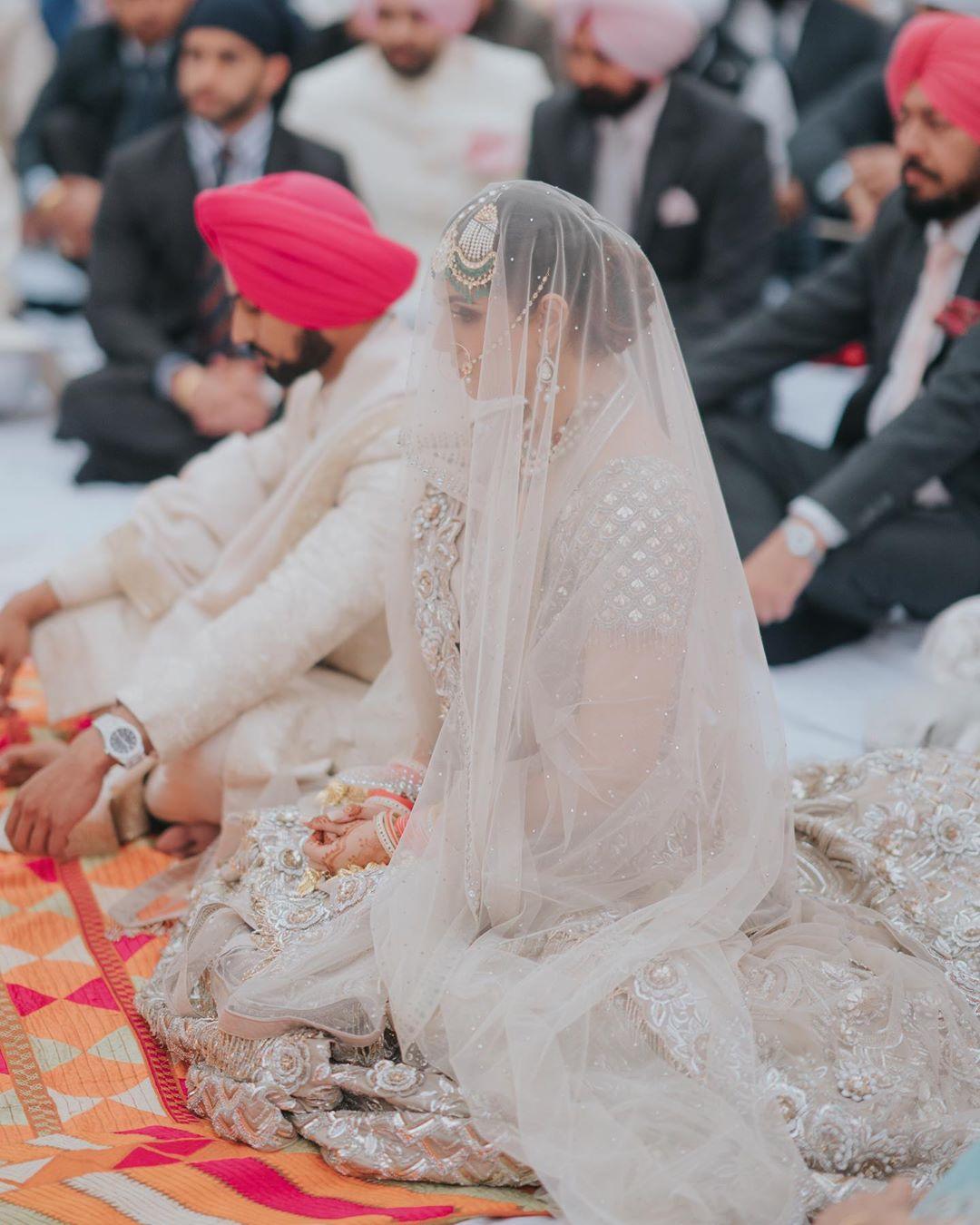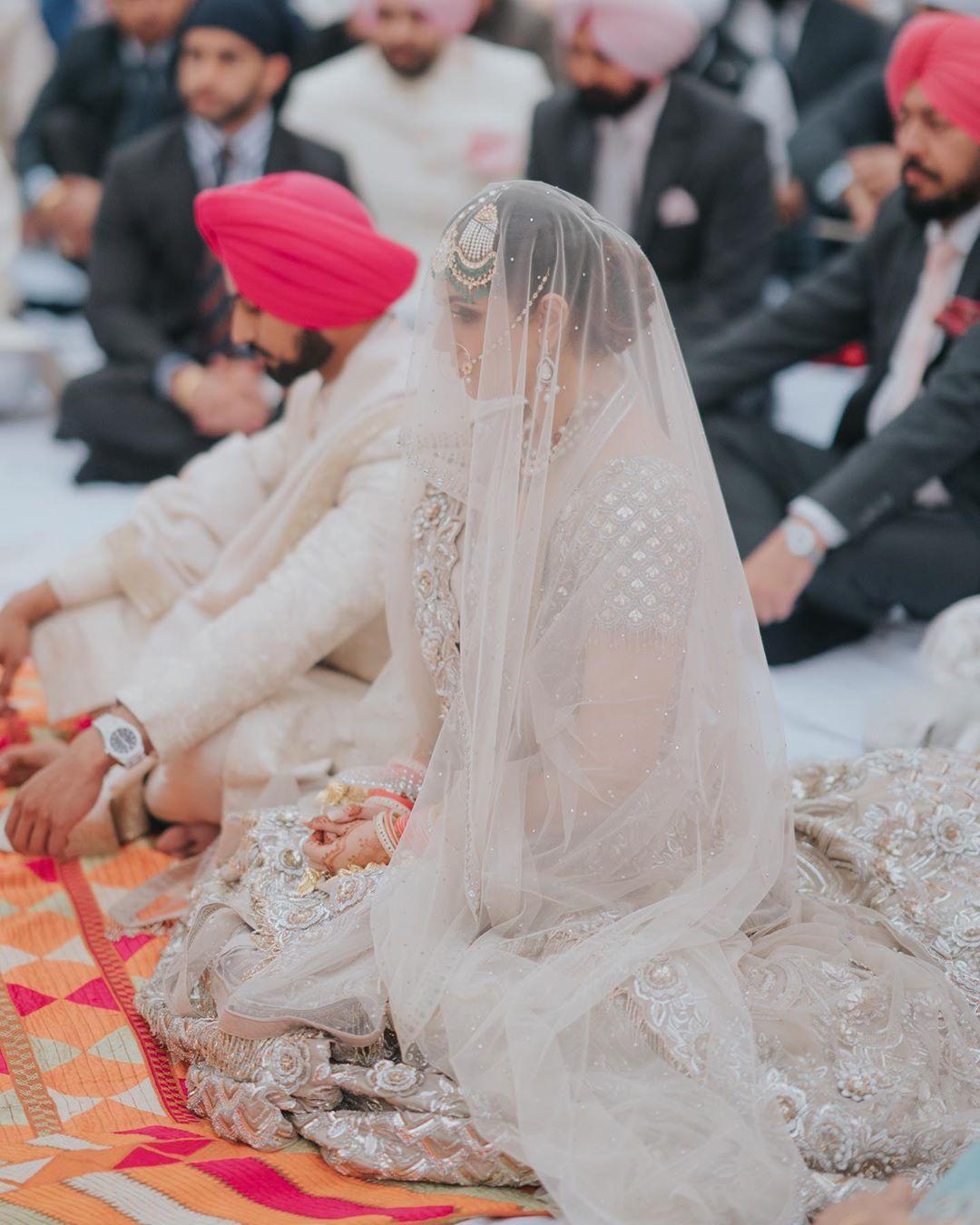A wedding is an auspicious event with a lot of meaningful rituals attached to it. A Sikh wedding also has a number of rituals that are to be performed in order to have a blissful Sikh Matrimonial.
- Roka ceremony
The Roka ceremony in a Sikh wedding is done to officiate the union of two individuals. This is the day when both sides of the family meet and decide on the wedding dates and preparations to be made. Gifts and sweets are also exchanged between both families, along with blessings being showered on the prospective couple.
- Engagement ceremony
After roka, the engagement ceremony is the first official ceremony before pre-wedding rituals start. On this day, the family and friends of the soon-to-be couple grace the event. Rings are exchanged between the prospective partners along with blessings, sweets, and gifts, and the day is filled with fun and dancing.
- Sahe chitthi
From here, the pre-wedding rituals in a Sikh wedding start. Sahe chitthi is the formal invitation to the wedding from the family of the bride to that of the bridegroom. It is the first auspicious step towards the wedding day. Elders from the bridegroom family visit the family of the bride along with some sweets.
- Gaun
Gaun is a ceremony similar to sangeet. For this ceremony, two sets of songs are prepared: Suhaag and Ghodiyaan. Suhaag is sung at the bride's place, and ghoodiyaan is for the bridegroom. All the females, including family, friends, and relatives, gather together to celebrate the upcoming wedding events. They dance around with full joy. The event takes place separately at the house of the bride and bridegroom.
- Mehndi
Mehndi is an inseparable part of wedding festivities. All the females from both sides of the wedding party adorn their hands with mehndi. Even the bridegroom applies mehndi to his palms for the auspicious beginning of a new life.
- Nanki chak
Nanki chak relates to the ritual from the maternal grandparents' side of the bride and the bridegroom. According to this ritual, gifts such as sweets, money, and clothes are given to the families of the bride and bridegroom. The wedding dress and accessories are also part of the ritual.
- Maiyaan
Maiyaan, or vatna, is the Haldi ceremony. Turmeric paste is prepared and applied to the bodies of the bride and bridegroom by family, friends, and relatives. It is done to ward off evil eyes. Haldi also has medicinal properties and is said to be the sign of goodness.
- Chooda and Kaleere ceremony
This ceremony is done on the bride's side. It relates to the maternal uncle and aunt of the bride. A bride is made to wear red bangles called choodas as a sign of being a married woman. Kaleere is a piece of long, hanging jewellery that is tied around the bride's wrists. These two ornaments are taken as a sign of a blissful and happy married life.
- Ganna
Ganna is a red thread that is tied around the wrists of both the bride and the bridegroom with some rice, turmeric, and shells. It is tied on the left wrist of the bride and on the right wrist of the bridegroom. It also forms part of post-wedding rituals.
- Jaggo
Jaggo is also a ceremony somewhat similar to Sangeet. In this, a pot is lifted onto the head and decorated with lights and lamps. People dance to the beat of dhol and boliyaan and enjoy themselves to the fullest. It is performed at night.
- Sehra and Sarwala
This is the ritual of the wedding day, performed by the sisters of the bridegroom. A headband is prepared for the bridegroom, known as a sehra. Sarwala is the nephew of the bridegroom and accompanies him throughout the wedding.
- Surma
This ritual is performed by the sister-in-law of the bridegroom by applying kohl to the bridegroom's eyes. In return, the bridegroom gives a gift to his sister-in-law. This is done to ward off evil eyes.

- Baraat and Milni
Baraat is the cluster of relatives on the bridegroom’s side. They go collectively to the place of ceremony with the band baaja. Milni is when both sides of the family meet each other at the wedding venue and exchange pleasantries.
- Ribbon cutting
Ribbon cutting is the ritual performed by the sisters of the bride while welcoming the bridegroom and his relatives. The bridegroom is required to cut the ribbon and give neg in the form of money to the sisters of the bride to let him enter the venue. This is a ritual done for fun.

- Anand karaj
Anand Karaj is the official wedding ritual. The bridegroom enters the Gurudwara Saheb first. Afterwards comes the bride, who sits on the left side of the bridegroom. Then they are guided by Granthi Ji to Lavaan, where they will be taking four rounds around Guru Granth Saheb Ji. At the end of the fourth round, they are married. They sign the marriage certificate to make their marriage official.
- Jutta chupai
It is another fun-filled ritual by the sisters of the bride where they hide the shoes of the bridegroom and, in return, ask for money.
- Vidaai
Vidaai is when the bride leaves her maternal house to go to her in-laws' place. She is supposed to throw rice backward, which is to be caught by her family. After that, she is seen off to the bridegroom’s place with her brothers pushing the car forward.
- Paani varna
This ritual is performed by the mother of the bridegroom to welcome the newlywed couple home. Milk mixed with water is taken into a small pot, and the mother of the bridegroom revolves it around the heads of the newlyweds. It is done to ward off evil eyes.
- Ring-finding and Kangana Khelna
This is yet another fun-filled ritual that is performed post-wedding. A ring is dropped on a plate full of water, milk, and flowers. The newlywed is supposed to find the ring. Whoever finds it first wins. The ganna tied during pre-wedding rituals is supposed to be open now. The newlyweds open each other’s ganna with one hand only. Whoever unties first wins.
- Phera pauna
Phera pauna is the bride's first official visit to her maternal home. It is supposed to happen on the very next day of the wedding. Gifts and sweets are exchanged between both families.
- Reception party
A party is also held to celebrate the union of two individuals and to shower them with love and blessings from family, friends, and relatives.
- Chaunke Chadna
Chaunke Chadna, also known as "first rasoi," is the ritual when the newlywed bride cooks for the first time at her in-laws. She cooks something sweet as a sign of a happy and blissful future ahead.


No comments yet